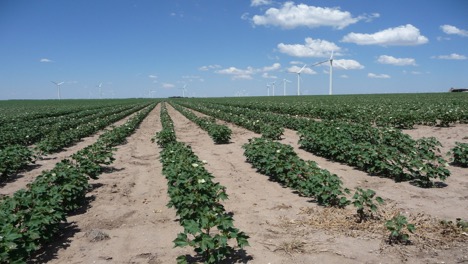Technological advancements in agriculture cultivation over the last century have reduced the total amount of America’s landscape that is solely dedicated to food production. Yet, those advances did come at a cost, including for bobwhites and other grassland-dependent birds. Increases in crop production have been accomplished through large-scale “clean” farming. Herbicides and pesticides virtually eliminate competition from plants beneficial to wildlife, while fertilizers and genetic engineering have massively improved crop yields. Mechanization created an opportunity for fewer farmers to feed more people. Corporate farming with larger fields, few native plants and insects, and the loss of fencerows and small idle areas have eliminated the niche that was created between bobwhite and cultivated agriculture.

The 1985 Food Securities Act (the Farm Bill) began to transform the face of agriculture. The Conservation Reserve Program (CRP) retired marginal croplands to more perennial vegetative cover that not only held the soil in place, but provided benefits for water quality and some types of wildlife in certain regions. Over the last quarter century, CRP and a host of conservation programs have continued to create vegetative cover that can benefit some types of wildlife, including bobwhites where appropriately established.
Wildlife conservationists need to aggressively capitalize on habitat opportunities that are available through the Farm Bill. The economics and history of Farm Bill utilization in the row crop system make it one of the most effective strategies to employ. Conception and promotion of the Habitat Buffers for Upland Birds (CP-33) practice by bobwhite conservationists is an example of how the Farm Bill can be molded to benefit bobwhite, but continued promotion and expansion of the practice is needed to fully reach its potential. Additionally, frequent mid-contract vegetation management of most CRP acreage must be conducted to maintain grassland habitat and the wildlife benefits of the practice.
Continuous and general CRP still fall short of creating all of the needs for the bobwhite’s annual life cycle. Shrubby protective cover often is absent, typically being discouraged by program regulations. The lack of an effective, short-term (3 to 5 years) fallowing option through CRP or other Farm Bill conservation provisions leaves a huge gap in what was once a common agricultural practice (i.e., rotational fallowing of crop fields). Unnecessary heavy fertilization also has created establishment problems for conservation plantings that can instead bolster invasive plants like Johnson grass and sericea lespedeza. More flexibility in the establishment of native conservation plantings may help alleviate nutrient loads and control invasive exotics.
Finally, it is critical that limited public funds maximize public benefits, by routinely providing valuable benefits to multiple natural resources simultaneously (erosion control, water quality and wildlife habitat). Introduced vegetative covers such as fescue or Bermuda grass, which provide negligible wildlife habitat value, should not be supported by public funds as “conservation” plantings. Huge wildlife habitat and other environmental and economic gains should be made for landowners and the public through Farm Bill conservation programs by planting native vegetation.
–Adapted from NBCI 2.0

